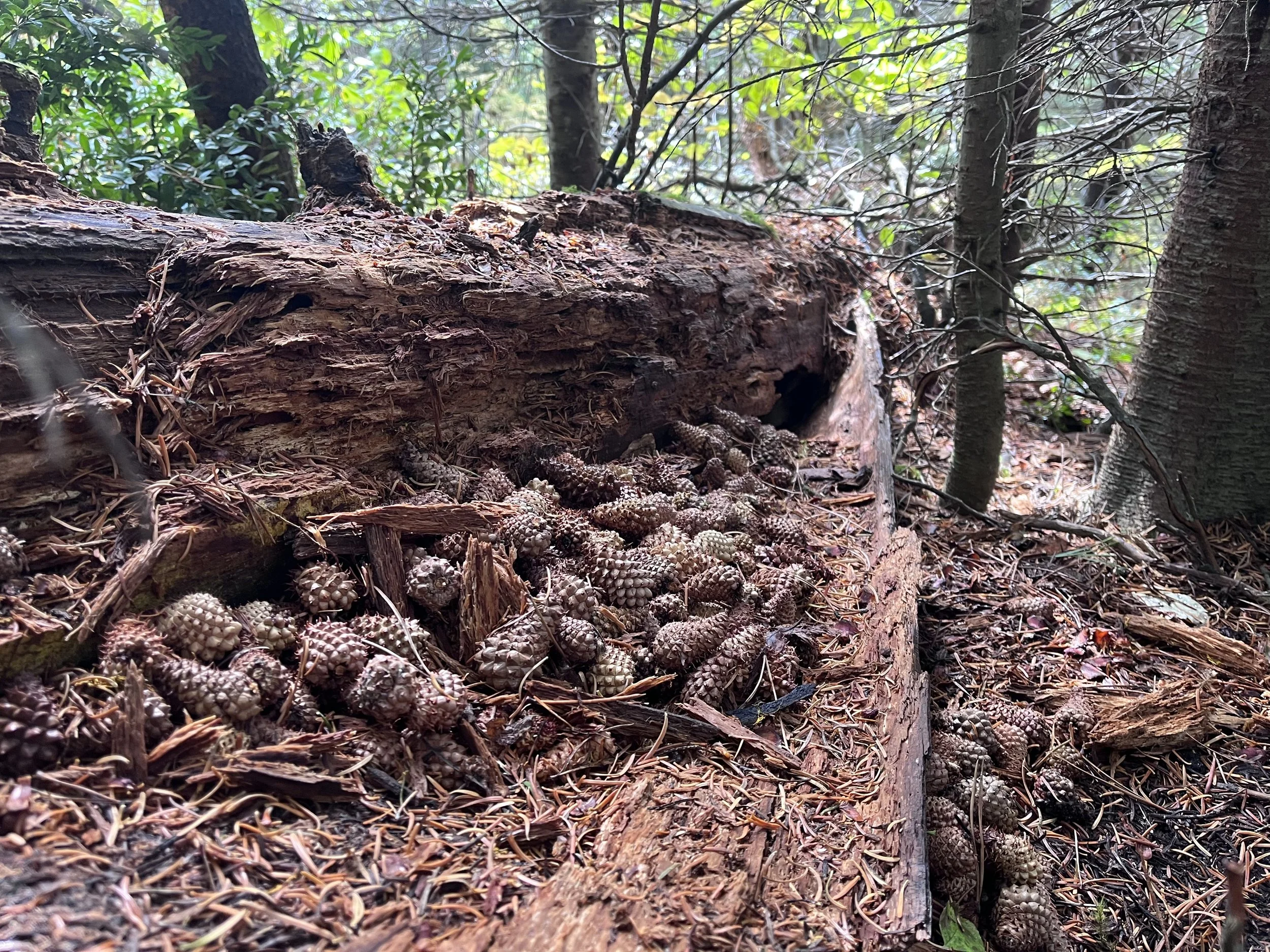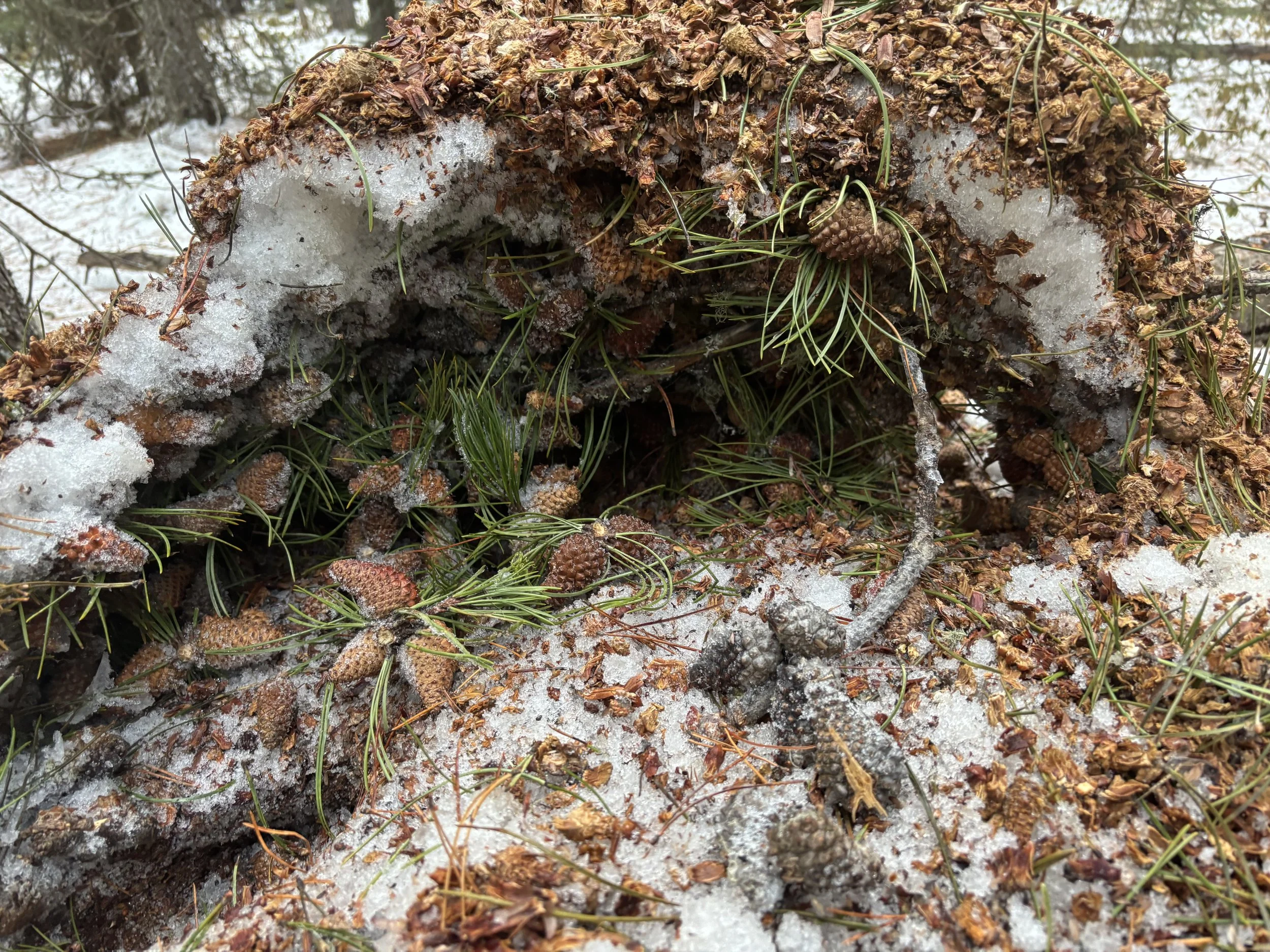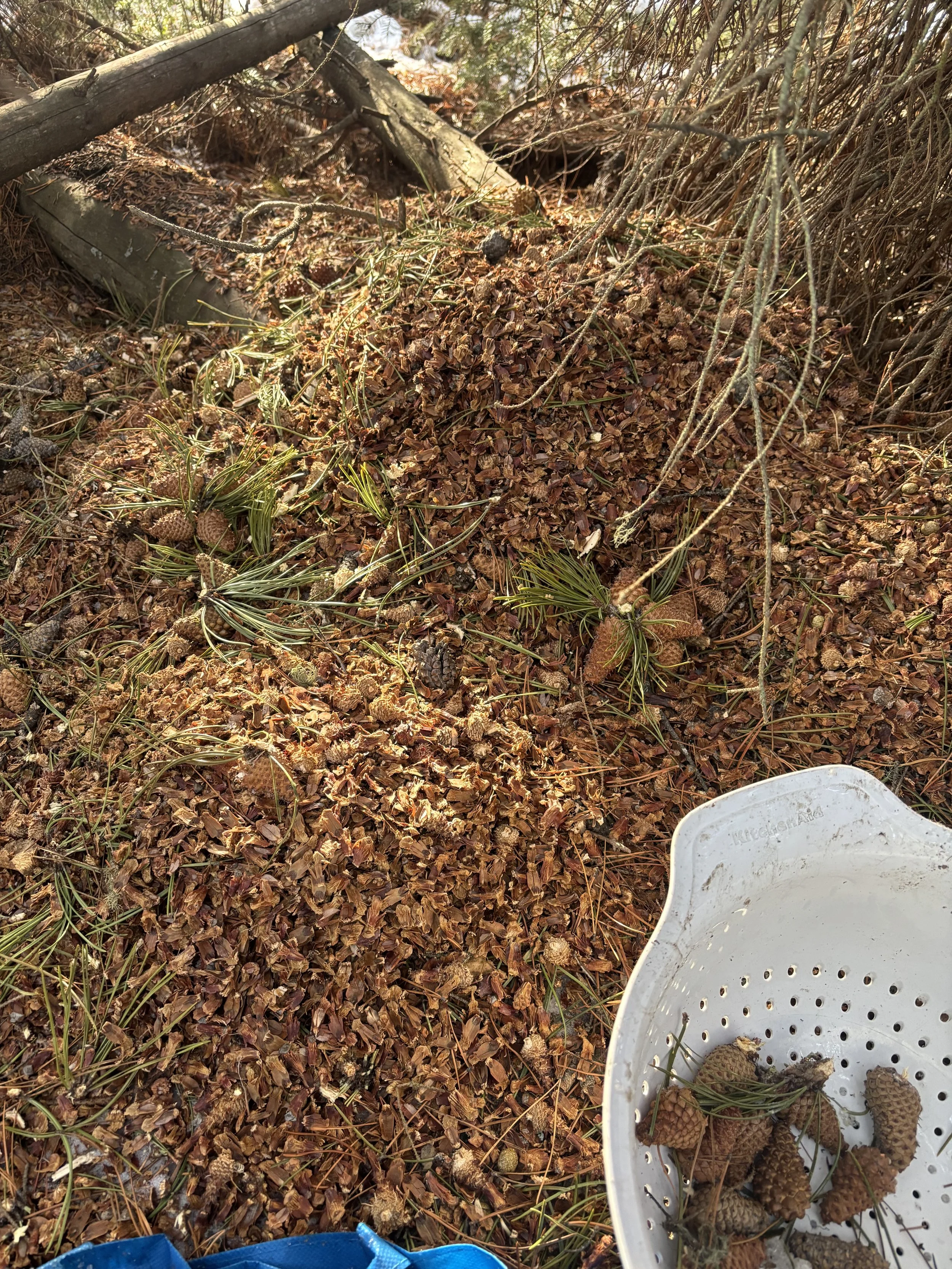Squirrels and their caches
I first came to know the Red Squirrel late in the fall of 2023. My friend and I had been contracted by the BC Ministry to collect pine cones. The work was hard, and the pace was slow. Until we met the Squirrels.
I was walking through the autumn forest when I came across a pile of cones stacked neatly in heaps against the edge of a rotten tree. I had discovered a squirrel cache.
Squirrels are hoarding rodents. They collect cones from trees and stash them in piles to retrieve later. Their main caching season begins in fall when cones become fully mature. From then on, it’s a mad dash to collect, store, and munch on seeds to survive the harsh boreal winters.
They are also territorial. Wars are fought between neighbours, and nests - called middens - are passed down for decades. Middens are vacated in death, after which neighbouring squirrels are happy to move in. It’s a squirrel version of generational wealth. The larger the midden, the better the odds of survival.
The oldest middens are meters high, mostly composed of the debris from previously-eaten cones. They also contain mushrooms, feathers, and bits of brightly-coloured plastic. Tunnels run through them deep into the underground.
I am become a squirrel house-wrecker. So are the squirrels, mind. A quarter of the cones in a cache are stolen from neighbouring squirrels. Against me, though, they have no recourse.
It takes some time before the squirrels notice me. The aggressive younglings perch themselves in trees and chirp as I sit next to their dens and steal their cones. Others, more timid, disappear underground as soon as they see me. I’m the intruder, this is their land.
Yet I feel a rush of excitement every time I stumble onto a new cache. It’s about 1.5 squirrels per hectare, and the caches reflect the population. I suspect that I find about 50 percent of the existing caches when I pass through a stand - many are hidden beneath shrubs and trees, and many are underground.
Of the caches I do find, I take less than half of the cones contained. I don’t want the squirrels to starve - I want to come back again, and again, each time I need cones from that area. I leave the squirrels the majority of their caches, adding to them a handful of peanuts.
What I like about the job is the part where I get to walk through the woods to look for caches. I like that there exists a history of squirrel pirates, people just like me. As a type, we’ve existed for 100 years, just as long as the modern industry. These days, our tradition has fallen out of favour in the western provinces, and our numbers are on the decline. But that’s changing. Mills are facing budget cuts, and squirrel collection is a cheap alternative to modern practices.
I like my isolation. When I’m with the squirrels, I’m free from the tedium and concrete. I’m a hiker, a map-maker, and a cache-raider. In the woods I see the world as if for the first time, free from the perils of modernity.





